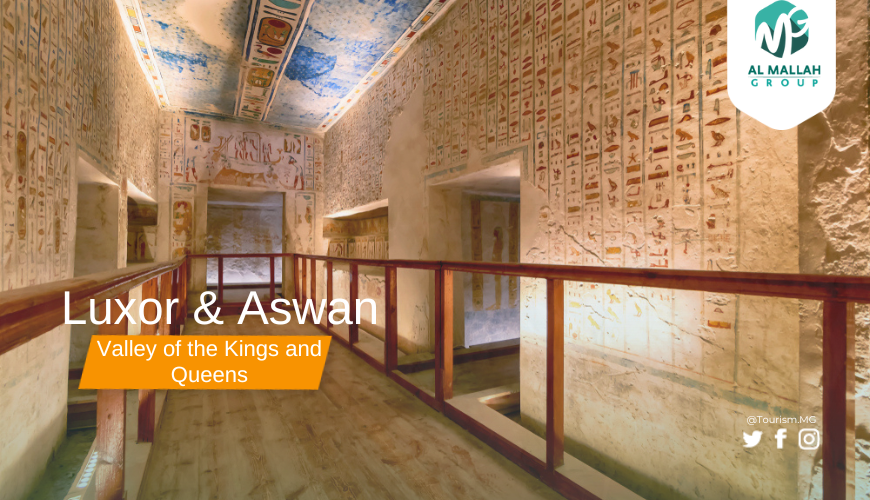The Valley of the Kings and Queens is an important archaeological site located on the west bank of the Nile River, near the city of Luxor in Egypt. This site is considered one of the most significant royal tombs in ancient Egypt, where kings and queens of ancient Egyptian dynasties were buried during the Old and New Kingdom periods (around 1550-1070 BCE).
The tombs in the Valley of the Kings are renowned for their unparalleled historical and artistic significance. They contain the tombs of ancient Egyptian kings, including the tomb of King Tutankhamun, discovered by the British archaeologist Howard Carter in 1922, which was documented in Egyptian mythology. Additionally, many subsidiary tombs have been discovered containing numerous unique wall paintings and inscriptions that provide valuable insights into life, beliefs, and art in ancient Egypt.
The Valley of the Kings and Queens is one of the most important tourist sites in Egypt, attracting thousands of visitors annually to explore this magnificent cultural heritage. It was inscribed on UNESCO's World Heritage List in 1979 and continues to be a source of awe and admiration for researchers and visitors alike, with its beauty and historical significance.


